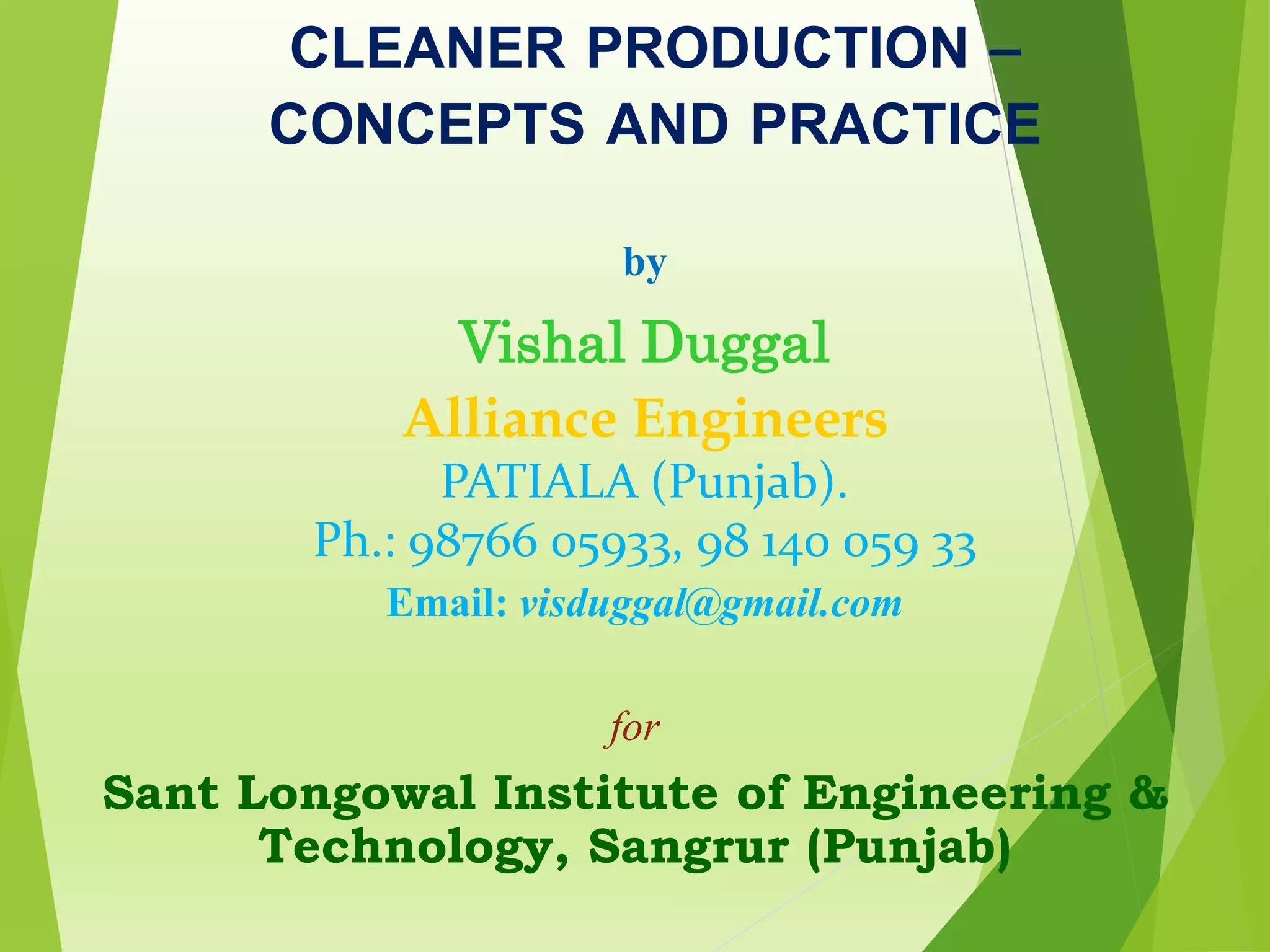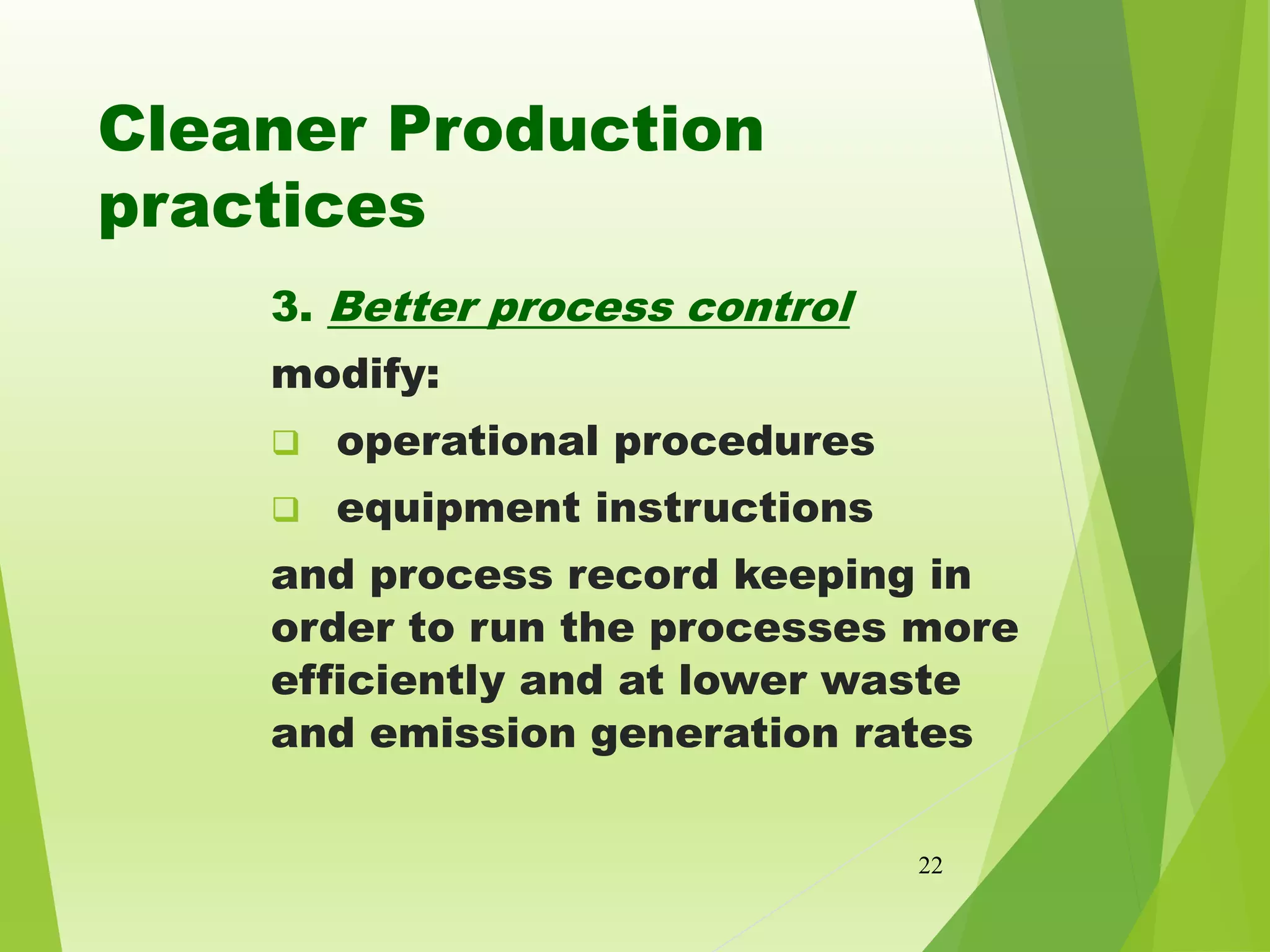Cleaner Production is a preventative environmental strategy that aims to reduce waste at the source. It involves continuous application of best practices like good housekeeping, input substitution, process modification and technology changes to increase efficiency and minimize environmental risks. A CP assessment identifies waste sources and feasible options are evaluated through technical, economic and environmental analyses. Successful CP implementation leads to cost savings, productivity gains and improved environmental performance while meeting stakeholder needs. Governments can promote CP through regulations and incentives while financial institutions benefit from lower risks in clients pursuing CP.

































































